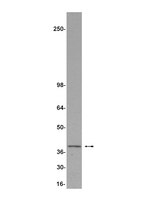Uterine Development and Fertility Are Dependent on Gene Dosage of the Nuclear Receptor Coregulator REA.
Sunghee Park,Sangyeon Yoon,Yuechao Zhao,Seong-Eun Park,Lan Liao,Jianming Xu,John P Lydon,Francesco J Demayo,Bert W O'Malley,Milan K Bagchi,Benita S Katzenellenbogen
Endocrinology
153
2011
Afficher le résumé
Although the effectiveness of nuclear hormone-receptor complexes is known to depend on coregulator partner proteins, relatively little is known about the roles of coregulators in uterine development and early stages of pregnancy and implantation. Because conventional genetic deletion of the coregulator, repressor of estrogen receptor activity (REA), was embryonic lethal, we here study REA conditional knockout mice generated by cre-loxP recombination, in which REA function was abrogated only in progesterone receptor-expressing tissues, to define the roles of REA in postembryonic stages and in a tissue-specific manner. We find that REA has gene dose-dependent activity impacting uterine development and fertility. Conditional homozygous mutant (REA(d/d)) mice developed to adulthood and showed normal ovarian function, but females were infertile with severely compromised uterine development and function characterized by cell cycle arrest, apoptosis, and altered adenogenesis (endometrial gland morphogenesis), resulting in failure of implantation and decidualization. By contrast, mice heterozygous for REA (REA(f/d)) had a very different phenotype, with estradiol treatment resulting in hyperstimulated, large uteri showing increased proliferation of luminal epithelial cells, and enhanced fluid imbibition associated with altered regulation of aquaporins. These REA(f/d) female mice showed a subfertility phenotype with reduced numbers and sizes of litters. These findings highlight that uterine development and regulation of estrogen receptor activities show a bimodal dependence on the gene dosage of REA. Optimal uterine development and functional activities require the normal gene dosage of REA, with partial or complete deletion resulting in hyperresponsiveness or underresponsiveness to hormone and subfertility or infertility, respectively. | 22585830
 |
Prohibitins are involved in protease-activated receptor 1-mediated platelet aggregation.
Y Zhang,Y Wang,Y Xiang,W Lee
Journal of thrombosis and haemostasis : JTH
10
2011
Afficher le résumé
Summary.? Background:?Prohibitins (PHBs), comprising the two homologous members PHB1 and PHB2, are ubiquitously expressed and highly conserved. The membrane PHBs have been reported to be involved in typhoid fever, obesity, and cancer metastasis. Proteomic studies have revealed the presence of PHBs in human platelets, but the roles of PHBs during platelet aggregation are unknown.Objectives:?To investigate the role of PHBs in platelet aggregation. Methods and results:?PHB1 and PHB2 were detected on the surfaces of human platelets by flow cytometry and confocal microscopy. The PHBs were distributed in lipid rafts, as determined by sucrose density centrifugation. In addition, the PHBs were associated with protease-activated receptor 1 (PAR1), as determined by Bm-TFF2 (a PAR1 agonist)-affinity chromatography, coimmunoprecipitation, and confocal microscopy. The platelet aggregation, ?(IIb) ?(3) activation, granular secretion and calcium mobilization stimulated by low concentrations of thrombin (0.05?U?mL(-1) ) or PAR1-activating peptide (PAR1-AP) (20??m) were reduced or abolished as a result of the blockade of PHBs by anti-PHB antibodies or their Fab fragments; however, the same results were not obtained with induction by high concentrations of thrombin (0.6?U?mL(-1) ) or protease-activated receptor 4-activating peptide (300??m). The calcium mobilization in MEG-01 megakaryocytes stimulated by PAR1-AP was significantly suppressed by PHB depletion with RNA interference against PHB1 and PHB2. Conclusions:?PHBs are localized on the human platelet membrane and are involved in PAR1-mediated platelet aggregation. Until recently, PHBs were unknown as regulators of PAR1 signaling, and they may be effective targets for antiplatelet therapy. | 22212092
 |










